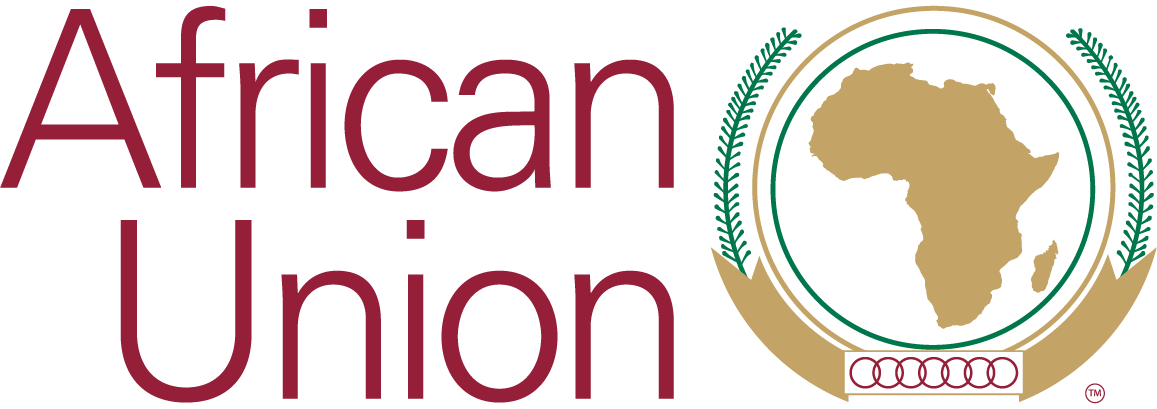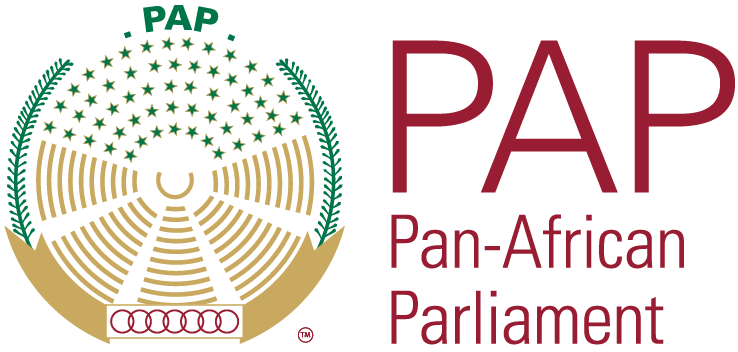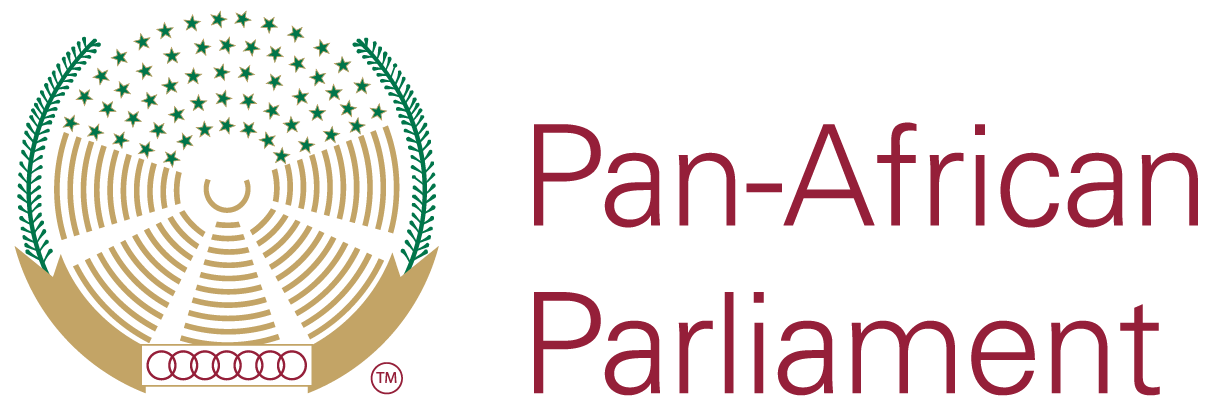Legislation
- Policy Framework For Procedural Guidelines for the Formulation of Model Laws by the Pan-African Parliament
The New Protocol of the PAP yet to enter into force has been lauded for, among other things, vesting the PAP with the quasi-legislative power of formulating model laws for the AU Member States and specifying the modalities for the exercise of this mandate. It is significant to note, however, that as an advisory and consultative organ of the African Union, the current mandate of the PAP is wide enough to empower it to propose and formulate model laws. As of starting 2018, the PAP has formulated or contributed to the formulation of two model laws and is planning to kick-start the formulation of about five other model laws.
Since the current Rules of Procedure are silent about the process of model law formulation, and to ensure harmonization and predictability in PAP processes leading up to model law formulation, it is important to develop a framework that will lay the procedural grounds and guidelines for the formulation of model laws. De lege ferenda, these guidelines shall be integrated into the Rules of Procedure at their next revision.
Model law refers to uniform legislation proposed for adaptation by a legislative body. The purpose of model law is to establish a useful framework that enables legislative bodies to have some uniformity in their governance, organization, and management. It helps institutions to conduct their functions smoothly and effectively discharge their responsibilities.
In adopting a model law, a legislative organ is entitled to make modifications to the extent necessary to meet its local needs. The use of model laws is an appropriate vehicle for national governments to enable them to harmonize, modernize and standardize their legislation. It is expected that national governments will adjust the model laws to accommodate local requirements that vary from country to country and where strict uniformity is not desirable.
In the African context, the idea of developing model laws for the Member States was intended to provide an acceptable tool to achieve some degree of harmonization of legal and institutional frameworks, which will advance African political, social and economic integration and development.
- Model Law Development Process
The Model Law development process consists of three main stages: The initiation stage, the formulation stage and the approval stage, each of which are outlined here below.
- Initiation of a Draft Model law
- The Model Law Formulation Initiative can originate from:
- A Political Organ of the PAP (Plenary, Committees and Bureau)
- A Member of PAP or a group of PAP Members
- A Thematic Caucus
- An AU Organ and institution,
- A Civil Society Organization registered in an AU Member State.
- A citizen of a Member State or a juristic person registered in an AU Member State.
- The PAP Secretariat shall provide technical guidance to the PAP Political Organs for their decision to initiate the process of Model Law Formulation.
- Proposal for the initiation of a Model Law shall be directed to the Bureau and submitted to the Clerk of PAP.
- The Bureau of PAP shall determine the Permanent Committee best fitted to be a Parent Committee for the proposed Model Law, to that end it may request the assistance or the recommendation of the Rules Committee.
- The decision of the Bureau shall be communicated to the Parent Committee and the Plenary.
- The Parent Committee shall be the Permanent Committee whose mandate is the most relevant to the thematic area of the proposal for Model Law. Where a proposed Model Law is relevant to the mandate of more than one Committee, only one Permanent Committee shall be designate as the Parent Committee.
- The Parent Committee shall consider the proposal by appling a three-pronged test for model law formulation as follows:
- Opportunity test: Does the issue that constitutes the subject of the model law require harmonization or uniformity of national standards amongst the AU Member States at this particular point in time?
- Legal test: Is uniformity or harmonization backed up by AU legal and policy frameworks?
- Capacity test: Is there financial, technical and material capacity for a potential Parent Committee and the PAP at large to handle and formulate model law in the proposed area? The capacity test shall consist in a feasibility study to be presented to the Parent Committee, which shall provide an Action Plan for the entire process of Model Law formulation, the budget for the process and the ascertainment of the resources required for the model law development process.
- If satisfied with the above test, the Parent Committee shall make a Recommendation to the Plenary. If not satisfied, the proposal shall end there but may be reintroduced with new elements.
- The Plenary shall consider the Recommendation from the Parent Committee, including reviewing all test elements. If satisfied, the Plenary adopt a Resolution approving the formulation of the draft model law. If not satisfied, the Plenary shall request the Parent Committee to review its Recommendation and submit it a second time.
- Formulation of the Draft Model Law: Juxtaposition of a technical and political process
After obtaining approval for the formulation of a Model Law, the draft of the said Model Law shall be developed in the following stages:
- Ascertainment of a Legislative Drafting Team:
Model Law Formulation process is spearheaded by the PAP Secretariat, as a Technical Arm of the PAP. The Legal Office shall coordinate the model law formulation process, including the technical research and legislative drafting of the Model Law. It shall galvanize the support of relevant PAP offices and, where necessary, of external Consultants.
- Establishment of an Advisory Group/Team:
For any proposed draft Model Law, there shall be established an Advisory Team which shall provide technical guidance and review drafts produced by the Legislative Drafting Team, prior to submission to the Parent Committee. The Joint Advisory Group shall be established by the Parent Committee and shall be composed of:
- Five Members representing and designated by the Regional Caucus with technical knowledge and competence in the thematic area of the draft Model Law;
- Two Members designated by the Parent Committee;
- One Representative of the Rules Committee;
- One Representative of the Justice and Human Rights Committee
- Four Expert Members coopted from organized groups working on the thematic area of the specific Model Law.
- Research and production of a Study or Policy Paper
The actual drafting of the Model Law is guided by a policy paper generated through research and study, which will provide knowledge and evidence base for the content, scope and focus of the draft Model Law. The study shall be the conceptual framework of the model law and be conducted by the drafting team under the support and supervision of the PAP Secretariat. The research shall include either qualitative or quantitative approaches, or a combination of both, depending on the nature and scope of the theme. It shall include a comparative perspective, learning from experiences, if any, from the Regional Parliaments. The policy paper shall be presented to and validated by the Advisory Group and thereafter presented to the Parent Committee.
- Formulation of the actual draft Model Law
- The drafting Team shall translate the policy paper into a zero Draft Model Law, in accordance with the observations received from the Joint Advisory Group and the Parent Committee.
- The initial Draft of the Model Law is presented for consideration and inputs of the Parent Committee.
- The updated Draft Model Law is presented to the Plenary for a first reading
- Until the beginning of the Adoption Process any MP or group of MPs may submit, to the Parent Committee, in writing a proposal for amendments of the text of the Draft Model Law
- After consideration by plenary in first reading by the Plenary, the Draft Model Law shall be submitted for popular consultations which shall enable all interested parties to submit their inputs.
- To the extent feasible Consultative meetings may be organized in the draft Model Law with a view to enrich the Draft Model Law with Regional perspectives. Consultative meetings respond to the need for ensuring peoples’ meaningful participation in the formulation of the Draft Model Law. The consultation will provide a forum for engaging key stakeholders from the region and incorporating regional and national realities and perspectives that the field research might have missed. It will also serve to build consensus and sensitize participants on the Model Law.
- Depending on the means available, deliberate efforts shall be made to organize regional consultations in all the African regions, or to seek inputs from all the regional Parliaments and relevant African Union organs and institutions.
- Inputs from the Consultative meetings shall be incorporated into the revised draft and submitted to the Legal Office of PAP for vetting and clearance.
- The vetted and cleared Draft is released and submitted to the Parent Committee for consideration and adoption.
- Adoption Process of the Model Law
- The Parent Committee shall consider the draft Model Law. If satisfied, it will submit the said draft Model Law to Plenary for consideration and adoption.
- If the Parent Committee is not satisfied, the draft Model Law shall return to the Drafting Team for readjustment and resubmission.
- Prior to consideration by the Plenary, the Permanent Committees on Justice and Human Rights and the Rules Committee shall jointly review the draft and formulate a Recommendation to the Plenary.
- By Resolution, the Plenary shall consider and debate the Draft Model Law and adopt it with or without amendments.
- Where the Plenary is not satisfied, it shall refer back the draft Model Law for harmonization by the Joint Committees on Rules and Justice and Human Rights in line with the observations formulated and resubmit it a second time.
- Post-Adoption Steps
- The Resolution on the adoption of the Model Law and the Model Law shall be submitted to the AU Assembly for approval and prior to submission to National and Regional Parliaments, and dissemination to the general public.
- Steps shall be taken to ensure effective advocacy for national adoption and use of Model Laws.
- There shall be monitoring and follow-up with Regional and National Parliaments to assess the state of implementation.
- The PAP shall evaluate challenges and continuously re-adapt its strategies for the domestication of Model Laws.
- Chart for The Proposed Procedural Guidelines for Model Law Formulation by The Pan-African Parliament




